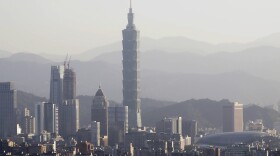It's been a week since the Trump administration stopped scheduling U.S. consulate interviews with foreign citizens applying for student visas. More than 1.1 million international students are currently studying in this country, and the majority of them come from Asia.
More than a thousand of the University of Hawaiʻi's students come from outside the U.S. to study here. That's a little more than 6% of the student body — slightly higher than the national average.
International students are hitting the books in each of the 50 states, and at some colleges and universities, they make up a much higher proportion of the campus population.
They comprise more than a quarter of the student body at the University of Southern California and at Harvard University, and nearly 40% at Columbia University. At the University of California, Berkeley, it's about 16% of the entire student body, and about a third of all graduate students.
And it's not just a matter of coastal elites — students from 113 countries attend the University of Illinois Urbana-Champaign. That's almost a quarter of the student body, and nearly 90% of them come from Asia. Nationally, India tops the number of student visas, followed by China.
Together, the two countries send more than half of all the international students in the United States.
Closer to home, the University of Hawaiʻi hosts the vast majority of international students in the state.
The top four countries of origin today are the same as three years ago. No. 4 is Canada, No. 3 is South Korea, No. 2 is China, and No. 1 is Japan.




